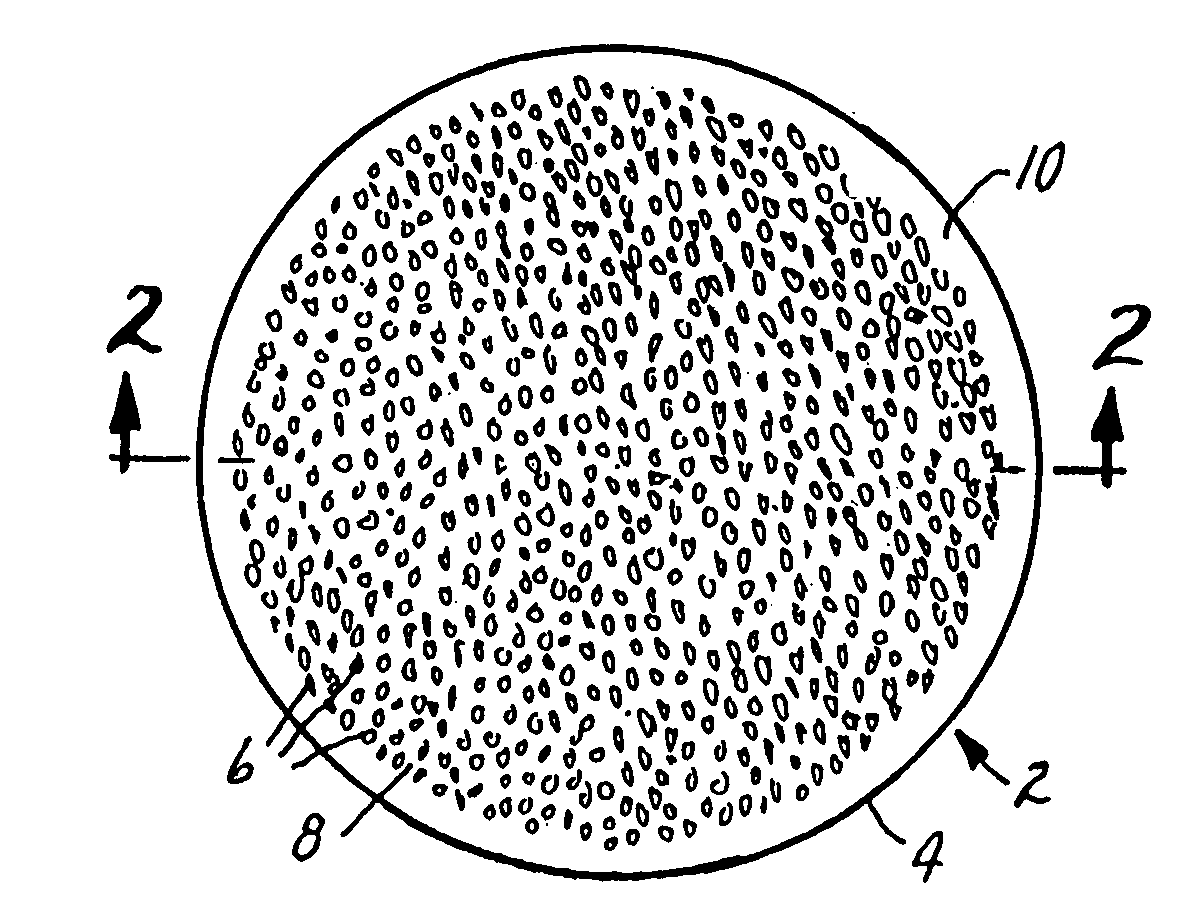Conditioning disk
a technology of condition disk and abrasive material, which is applied in the field of abrasive articles, can solve the problems of reducing the support for adjacent particles, abrasive particles will have a tendency to be dislodged from the matrix material, and abrasive particles can easily scratch and damage the polished surface of the workpiece, so as to reduce the likelihood of abrasive particles breaking loos
- Summary
- Abstract
- Description
- Claims
- Application Information
AI Technical Summary
Benefits of technology
Problems solved by technology
Method used
Image
Examples
example
[0033]In a specific embodiment of the invention, 80 / 100 diamond abrasive particles were embedded in a matrix material comprising 20% by weight brazing alloy and 80% by weight stainless steel powder. The brazing alloy used was AMDRY alloy No. 767, available from Sulzer Metco, Westbury, N.Y., which includes nickel, phosphorous, and chromium. The chromium serves to react with and form a chemical bond with the diamond abrasive particles. The stainless steel powder used was Ancor 434L-100, available from Hoeganaes Co., Riverton, N.J. The diamond abrasive particles, brazing alloy, and stainless steel powder were then heated to a temperature in the range of generally between 900 and 1100 degrees Celsius, pressurized to a pressure in the range of generally between 75 and 400 kg / cm2, and maintained at these conditions for a time period of generally between 3 and 15 minutes to allow one or more of the following to occur: (1) the stainless steel to become sintered; (2) the brazing alloy to flo...
PUM
| Property | Measurement | Unit |
|---|---|---|
| size | aaaaa | aaaaa |
| size | aaaaa | aaaaa |
| size | aaaaa | aaaaa |
Abstract
Description
Claims
Application Information
 Login to View More
Login to View More - R&D
- Intellectual Property
- Life Sciences
- Materials
- Tech Scout
- Unparalleled Data Quality
- Higher Quality Content
- 60% Fewer Hallucinations
Browse by: Latest US Patents, China's latest patents, Technical Efficacy Thesaurus, Application Domain, Technology Topic, Popular Technical Reports.
© 2025 PatSnap. All rights reserved.Legal|Privacy policy|Modern Slavery Act Transparency Statement|Sitemap|About US| Contact US: help@patsnap.com



